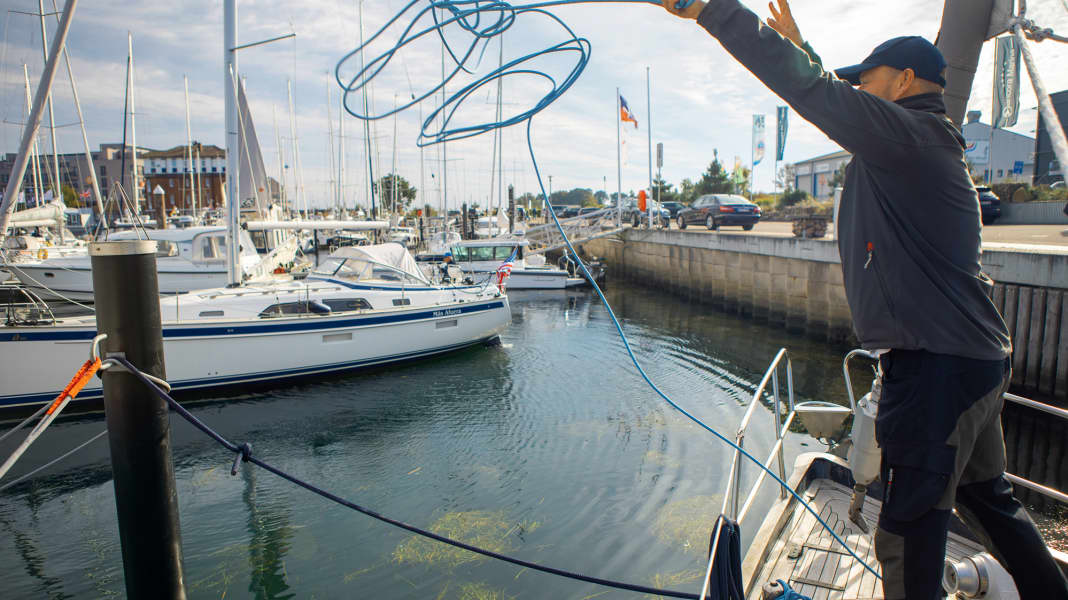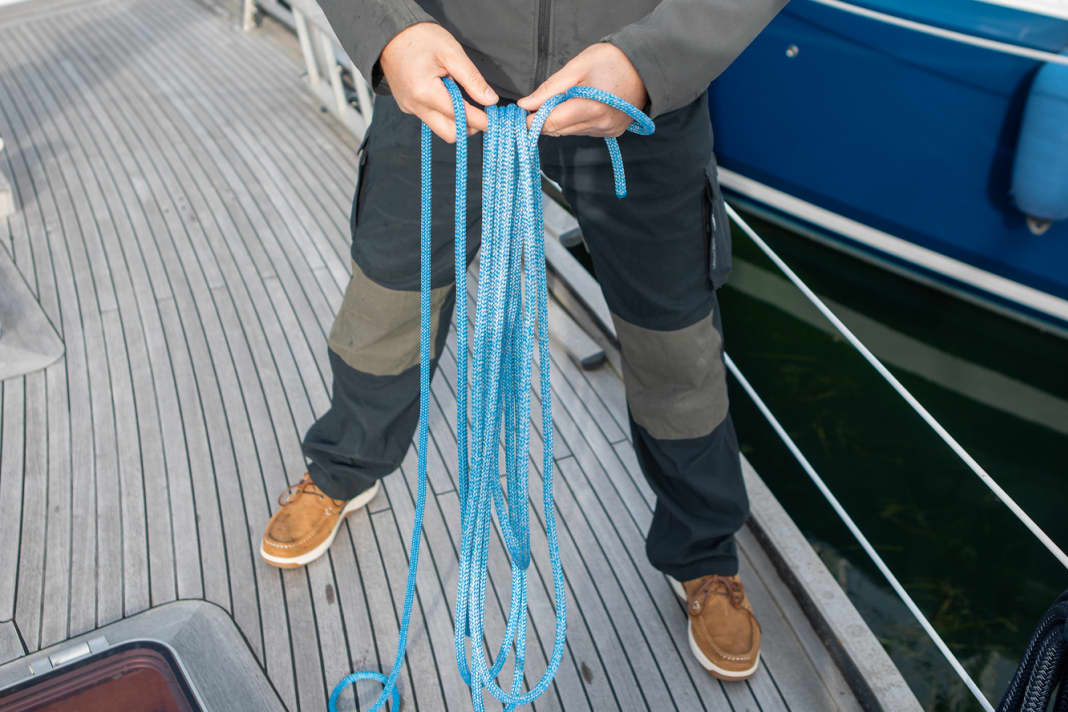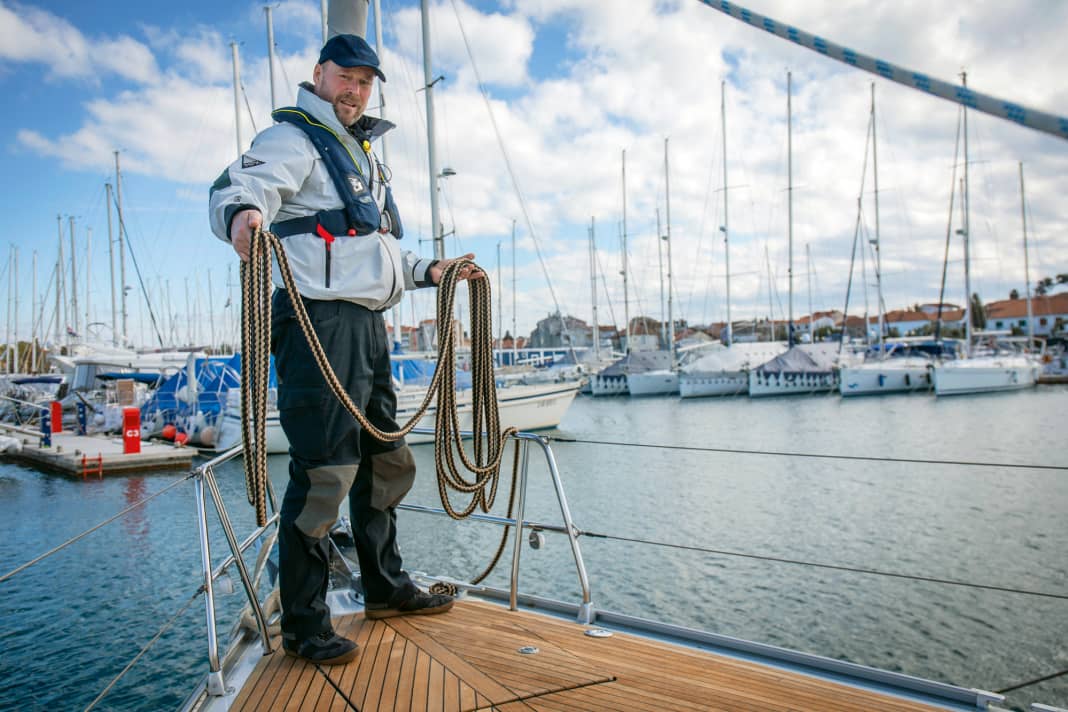
There are several conceivable scenarios in which lines are thrown. For example, when mooring to a person ashore. Or an attempt is made to throw a line around a pole if it has been missed during the mooring manoeuvre. A towing hawser is also thrown rather than handed over by hand in rough seas.
In harbour manoeuvres, however, the line throw should not be taken into account, but rather regarded as the last chance for a shore connection. Because all too often it fails and with it the manoeuvre if it was planned with a throw.
Nevertheless, mastering the line throw can be useful. If, for example, the leeward pile is missed when mooring, an attempt can be made to hit the pile by throwing the line after mooring up to windward. Otherwise, the yacht would have to be moved aft until the pole can be reached by hand and then moved forwards again to the mooring.
Line casting tips:
- If the bundle of ropes is too heavy, a thin safety line with a weight can be thrown to the person picking it up and the mooring line can then be pulled on it
- You usually manage fewer metres than you think, so don't overdo it
- Don't rely on the throw, it can go wrong
- Secure yourself well to avoid going overboard with momentum
Two types of throw are suitable for the case with the pole. And since the yacht is already moored with the windward mooring lines, you have an infinite number of attempts. However, attempting to throw an eye over the pole using a bowline will usually not succeed. It is better to throw the entire line rather than a single, large eye. This increases the accuracy enormously. However, the mooring line must be long enough for this, as it then runs on a slip, i.e. double.
The lasso throw
In the so-called lasso throw, only one part is thrown.






Two-handed throw
With this method, the line is thrown with both hands at the same time. This increases accuracy, but reduces the distance that can be covered, as there is less momentum in the line than with a one-handed throw.






Hand over the leash
The line should be thrown to another person, for example on land or when establishing a towing connection. This method can be used to cover very long distances of up to two boat lengths or more. The preparation is the same as for the two-handed cast.




